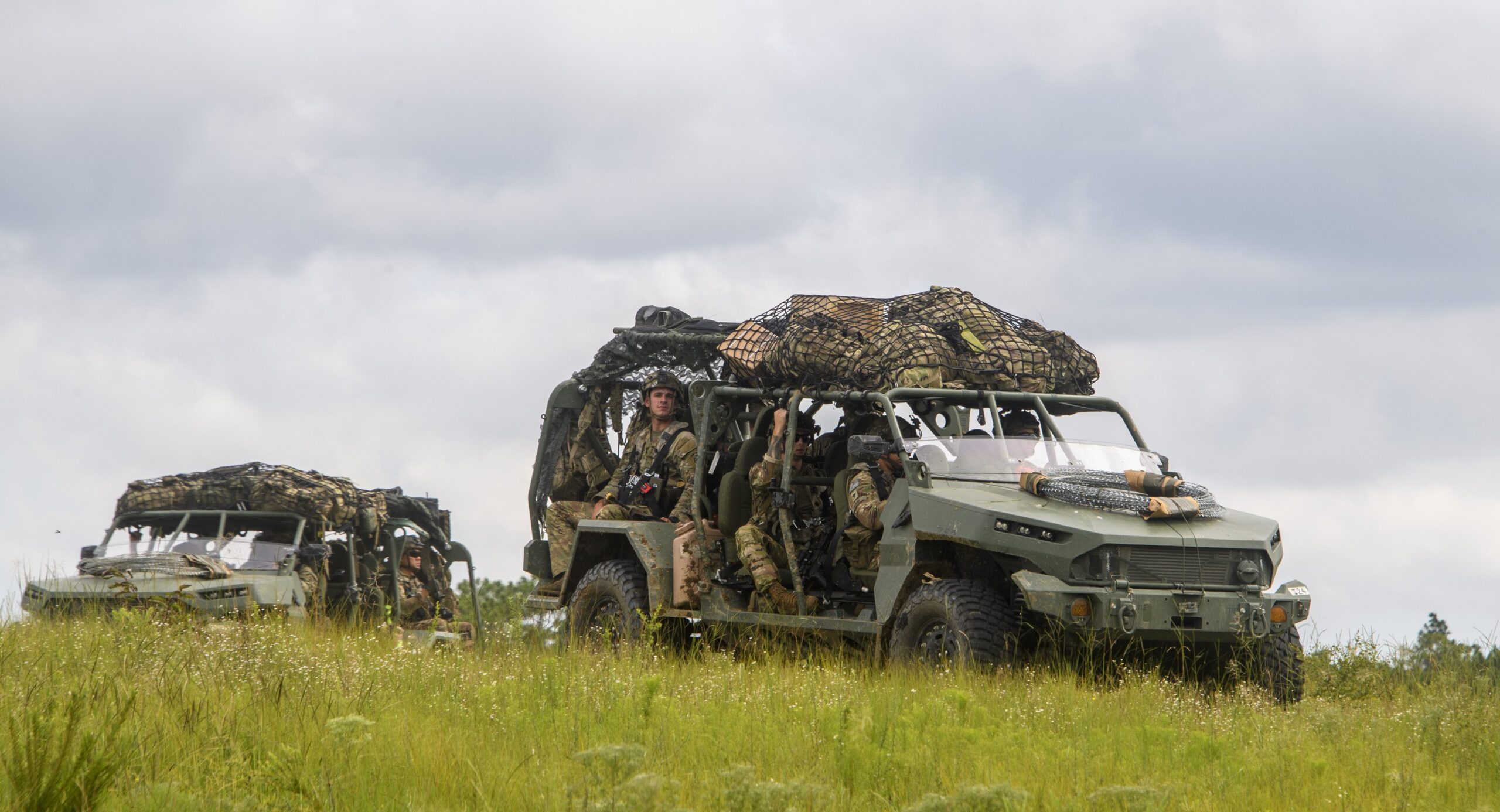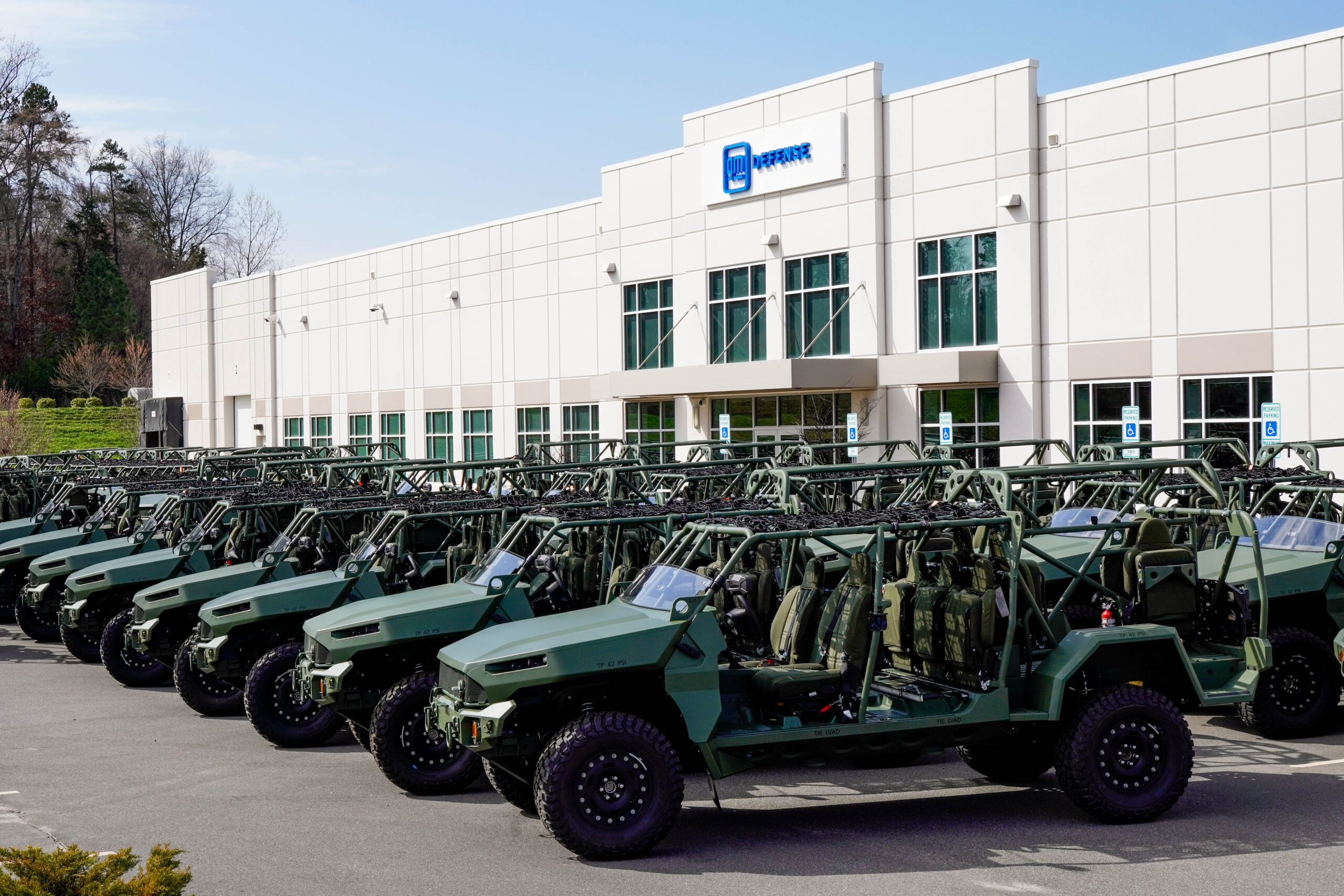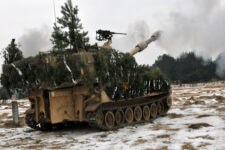
GM Defense’s Infantry Squad Vehicle features 90 percent Commercial-Off-The-Shelf parts. Photo courtesy of GM Defense.
In this Q&A with Steve duMont, GM Defense president, he discusses why and how the acquisition process could change to realize the benefits of commercial technologies, how to address concerns around intellectual property, and GM Defense’s plans in areas like electrification and autonomous systems.
Q: Congress granted the US Department of Defense new and more flexible acquisition tools to enable faster delivery of enhanced capabilities to the warfighter. Are the tools working as intended?
duMont: Congress made a clear effort to speed up the defense-acquisition process, which has helped open doors for non-traditional defense companies like GM Defense to compete for and win defense contracts These new acquisition tools have helped increase the speed with which innovative solutions can be delivered to the warfighter. However, we need to ensure that we are actively managing the risk as we push to go faster from prototype development to production and fielding.
One way to help lower the risk of a go-fast approach is to consider the use of commercial technology. By the time a new technology makes its way to the commercial market, it has gone through significant development, testing and validation that helps reduce third- and fourth-order impacts which may be a factor with unproven technology. But if the acquisition process is going to change to help facilitate the use of advanced technology, consideration should be given to augmenting the entire process, from front end activities to test, validation and final acceptance. This will allow the government to more fully benefit from commercial investments made in advanced technology and the processes used to test and validate these capabilities.

Infantry Squad Vehicles parked in front of GM Defense’s state-of-the-art Concord, North Carolina, production facility. Photo courtesy of GM Defense.
Q: How is GM Defense leveraging commercial technology to address emerging operational needs?
duMont: GM Defense has the significant benefit of leveraging the investments of its parent company, General Motors, including $35 billion committed to electric vehicle (EV) and autonomous vehicle (AV) technologies to help deliver advanced mobility solutions to defense and government customers.
In addition, GM has cut production time on some vehicle-development programs in half and realized billions of dollars in savings through the use of Virtual Design, Development and Validation – or VDDV. GM Defense is leveraging the benefits of this robust set of digital engineering tools to create greater efficiencies across all phases of development and test to accelerate delivery timelines, while also decreasing costs.
We also see opportunities to leverage technology enhancements, such as Advanced Driver Assistance Systems – or ADAS, and 360-degree surround-view camera systems, to support both emerging and legacy defense programs. These advanced technologies and digital engineering processes will be leveraged on new programs, such as the US Army’s Common Tactical Truck and the Electric Light Reconnaissance Vehicle.
Q: How can commercial companies be encouraged to participate in defense pursuits when there are potential questions around who owns the design work and intellectual property?
duMont: Significant investment has been made by industry to bring technologies to the commercial market, and no company wants to give away its intellectual property (IP). There is room for government and industry to better collaborate on how IP and data rights to component and product design are handled. The Army, through its most recent IP policy directive, is clearly moving in the right direction to foster a fair and reasonable approach that addresses both industry and government equities.
IP and data rights policy should reflect a thoughtful, consistent and balanced approach where the IP and actual data needed throughout a system’s lifecycle are identified early in the process. There should be an approach to develop customized IP strategies that are tailored to the unique requirements of the program and take into consideration the benefit of greater commercialization. To truly benefit from more commercial investments in the defense and government marketplace, the government will need to closely consider commercial IP concerns.
Q: How can the use of Commercial-Off-The-Shelf technology be expanded on the global stage?
duMont: GM Defense is uniquely positioned to leverage the commercial technologies, world-class manufacturing and global supply chain of GM. These resources provide GM Defense the ability to deliver advanced technologies quickly and field to locations worldwide. Through our reach back into GM, we can support the US military customers and allied militaries alike with incredible agility, flexibility and quality.






















